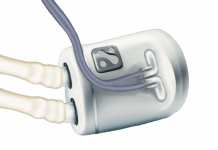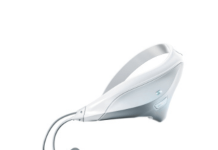US-based brain-computer interface company, Science Corporation, has announced preliminary results from the trial of its PRIMA retina implant, finding the device able to restore real-form vision in patients who had lost their central visual field.
The California-based company determined that sight loss patients could perform high acuity i tasks such as reading or recognising faces after being implanted with the company’s PRIMA visual prosthesis, placed surgically under the retina, and paired with a bespoke pair of glasses with a camera and built-in projection system alongside a pocket processor that processes the image for clarity and magnification.
Related: Paragon 28 launches Phantom FIBULA NAIL system for fracture repair
The study, dubbed PRIMAvera, examined 38 patients suffering from geographic atrophy (GA), who were implanted with the PRIMA retinal system to restore vision in a bid to obtain a CE mark for European market approval for the implant.
Max Hodak, Science Corp CEO, said: “To my knowledge, this is the first time that restoration of the ability to fluently read has ever been definitively shown in blind patients. This represents an enormous turning point for the field, and we’re incredibly excited to bring this important technology to market over the next few years.”
As part of the study, the visual acuity of all participating patients was measured at 6 and 12-months post-implantation using the logMAR scoring system, Results found that the implant was able to restore meaningful visual acuity in patients living with geographic atrophy (GA) located with in the Fovea, additionally finding that users were able to use the device for reading letters, numbers, and words that were not previously possible.
According to the US’ National Institutes of Health (NIH) there are about one million cases of GA in the country with 160,000 new cases occurring each year.
Frank Holz, scientific coordinator of the PRIMAvera study, said: “The results demonstrate a milestone in the treatment of severe vision loss caused by geographic atrophy due to age-related macular degeneration. For the first time it was possible to restore real-form vision in a retina that has deteriorated due to age-related macular degeneration. Prior to this, there have been no real treatment options to improve vision for these patients.“
Elsewhere in the field of brain implants, Nexalin has unveiled mixed results from a clinical trial evaluating its deep intracranial frequency stimulation (DIFS) technology in patients with mild Alzheimer’s disease, missing out on its primary endpoint. Meanwhile, the field of Brain Computer Interfaces (BCI) has been rapidly growing with potential uses spanning a huge range of indications.






